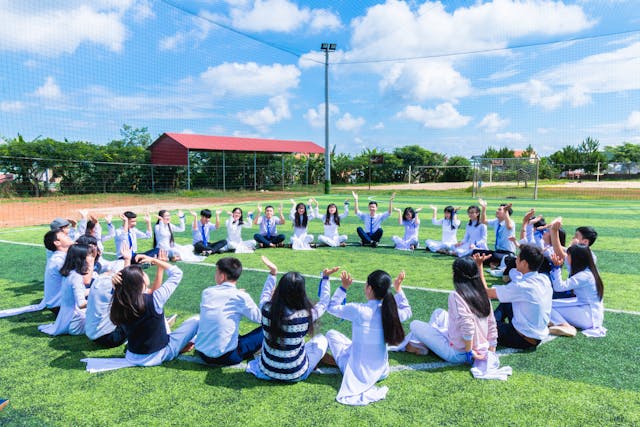Global Education: How Different Countries Are Approaching Learning
Education is a fundamental part of shaping societies and individuals, but the methods and approaches vary widely across the globe. Different countries prioritize different aspects of learning, from curriculum design to teaching styles, and the result is a rich tapestry of educational systems that reflect each nation's culture, values, and economic needs.
In this article, we’ll explore how various countries approach education, what makes their systems unique, and the benefits and challenges of these diverse educational models.

Finland: A Focus on Equality and Student Well-Being
Why Finland’s Education System Stands Out
Finland’s education system is often praised as one of the best in the world. The country places a strong emphasis on equality, well-being, and fostering a love of learning. Finnish schools are known for their focus on:
- Less Testing and More Play: Finnish children spend less time taking exams compared to students in other countries. Instead, there’s a greater emphasis on learning through play, especially in early childhood education.
- Highly Trained Teachers: Teachers in Finland are highly respected professionals, requiring a master’s degree to enter the profession. This ensures that educators are not only qualified but also passionate about teaching.
- Equality and Inclusiveness: Finland places great importance on providing equal opportunities for all students, regardless of background or socioeconomic status. There’s a strong focus on providing extra support for students with learning difficulties, ensuring that no child is left behind.
- Student-Centered Approach: Students are encouraged to take responsibility for their own learning. The approach is flexible, allowing students to move at their own pace and explore their interests within a broad curriculum.
Japan: Discipline, Respect, and Academic Rigor
The Importance of Hard Work and Respect in Education
Japan’s education system is known for its academic rigor, discipline, and emphasis on group work. Japanese schools are particularly focused on:
- Hard Work and Discipline: Education in Japan is serious, with students working long hours both in school and at home. The culture places a premium on diligence, respect, and effort. This work ethic is instilled early, with students often spending extra hours in after-school clubs or study sessions.
- Respect and Group Harmony: Japanese schools focus on teaching students respect for others and the importance of working together. Group activities are a cornerstone of the educational experience, emphasizing cooperation, social harmony, and responsibility.
- Strict Curriculum: The curriculum is highly structured and rigorous, with a strong emphasis on mathematics, science, and language. Students are expected to perform well in standardized exams, which play a significant role in their future opportunities.
- Long School Days: Japanese students often attend school for long hours and participate in after-school extracurricular activities. While this can lead to academic success, it also presents challenges related to student stress and mental health.
The United States: A Focus on Innovation and Individuality
Celebrating Diversity and Innovation in Learning
The United States has one of the most diverse education systems in the world, reflecting the country’s multicultural population. The approach to learning varies significantly from state to state, but some key elements include:
- Diverse Curriculum: In the U.S., students have a broad range of subjects to choose from, including science, humanities, and the arts. Schools emphasize critical thinking, creativity, and individuality, encouraging students to pursue their own interests and talents.
- Standardized Testing: The U.S. system places a significant focus on standardized testing, such as the SATs and ACTs. These exams play a crucial role in college admissions and are often used as a measure of academic performance.
- Flexibility and Innovation: U.S. schools are often seen as promoting innovation, with a wide variety of teaching methods, from traditional classrooms to online learning. Students are encouraged to think critically and creatively, with many opportunities to engage in hands-on learning, internships, and extracurricular activities.
- Higher Education System: The U.S. is home to many of the world’s most prestigious universities. There’s a strong emphasis on college preparation, with high school students often aiming to attend top-tier institutions. However, this focus on higher education also brings issues of student debt and access to education for all students.
South Korea: Excellence, Competition, and Academic Pressure
The High Stakes of Education in South Korea
South Korea’s education system is known for its high academic standards and the intense pressure placed on students to succeed. Key characteristics of the South Korean education system include:
- Intense Competition: South Korean students face immense competition for spots in top universities, which is seen as crucial for securing a successful career. This has led to a culture of extreme pressure, with students often attending after-school programs (known as "hagwons") to prepare for exams.
- Emphasis on STEM: South Korea places a strong emphasis on science, technology, engineering, and mathematics (STEM) subjects, aiming to produce a highly skilled workforce. The country’s technological and economic success is partly attributed to its investment in education.
- Long Hours and High Stress: Students in South Korea often spend long hours studying, both in school and at additional tutoring centers. The focus on academic excellence can lead to high levels of stress and mental health challenges.
- Support for Innovation: Despite the intense pressure, South Korea has also begun to focus on innovation and creativity, incorporating these elements into the education system to nurture well-rounded individuals who can adapt to a rapidly changing world.

Germany: Apprenticeships and Practical Learning
The Dual System of Education
Germany has a distinctive approach to education, particularly in how it integrates vocational training with academic learning. The German system is characterized by:
- Dual Education System: Germany is known for its "dual system," which combines classroom learning with hands-on vocational training. High school students can choose to enter apprenticeships in various industries, allowing them to gain real-world experience while continuing their education.
- Strong Focus on Vocational Education: Vocational education is highly respected in Germany, with many students choosing to pursue technical careers in fields like engineering, trade, and healthcare. The system offers numerous pathways to success, ensuring that all students have access to opportunities based on their interests and skills.
- Quality Higher Education: Germany also has a strong academic tradition, with many world-renowned universities and research institutions. Public universities in Germany are often free or low-cost, making higher education more accessible.
- Emphasis on Innovation and Industry: Germany’s education system is closely tied to its industrial sector. Students are often prepared to enter a highly competitive job market, equipped with both academic knowledge and practical experience.
Conclusion: Embracing Diversity in Global Education
As we can see, education systems vary greatly across the world, shaped by each country’s culture, history, and priorities. From Finland’s emphasis on equality and student well-being to Japan’s disciplined academic rigor, each model offers unique strengths and challenges.
As global education continues to evolve, countries may look to one another for inspiration, learning from the best practices that suit their own needs. In the end, the goal of every educational system remains the same: to equip the next generation with the skills, knowledge, and values necessary to thrive in a rapidly changing world. By embracing diverse approaches to learning, we can create a more inclusive and effective global education system.












